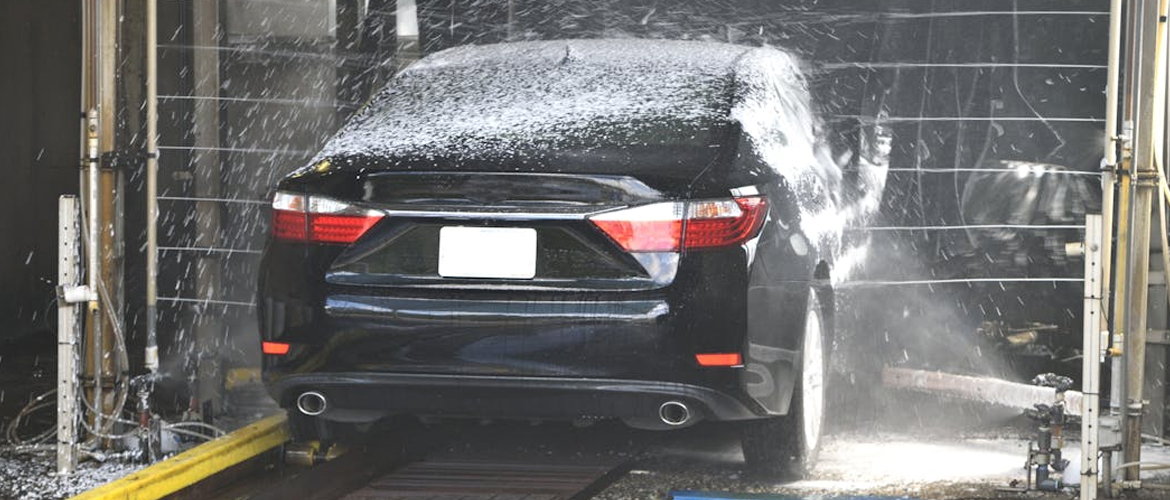Imagine this: It’s Monday morning, and you’re already running late for work. You dash to your car, coffee in one hand, keys in the other. As you hop in, you’re hit with the sight of crumbs on the seat, smudges on the windows, and that mysterious odor from last week’s takeout. Not the best way to start the day, right? We’ve all been there! But what if I told you that with a few simple tricks, you could keep your car looking (and smelling) like it just rolled off the lot? Buckle up, because we’re diving into the ultimate guide on how to clean your car, inside and out, with tips that will have your ride looking spotless in no time.
Why Keeping Your Car Clean Matters
Keeping your car clean isn’t just about impressing your passengers (though that’s a nice perk). Regular cleaning can extend the life of your car’s interior and exterior, maintain its resale value, and make every drive more enjoyable. Plus, a clean car is a reflection of how you care for your personal space—whether it’s your home or your vehicle.
Related Reading: If you’re into keeping your home as spotless as your car, check out our Best Home Cleaning Hacks to make your living space shine too!
How to Clean Car Seats: Tips for Every Material

A. Fabric Seats
- Start by vacuuming the seats thoroughly to remove dust and debris.
- Then, mix a solution of warm water and mild detergent. Use a microfiber cloth to gently scrub the fabric, working in small sections.
- For stubborn stains, a mixture of vinegar and baking soda works wonders.
- After cleaning, use a dry towel to blot any excess moisture and leave the windows down to allow the seats to air dry.
B. Leather Seats
- Leather needs a bit more TLC. First, wipe down the seats with a damp cloth to remove surface dirt.
- Then, apply a leather cleaner using a soft cloth, making sure to work it into the material.
- Follow up with a leather conditioner to keep the seats soft and prevent cracking.
Pro Tip: If you’ve got kids, you know spills are inevitable. Keep a small bottle of fabric cleaner in your car for quick clean-ups.
Related Reading: Dealing with pesky stains at home too? Our DIY Stain Removal Guide will be your new best friend!
How to Clean Car Headlights

Over time, headlights can become foggy due to oxidation, reducing visibility at night. Here’s a quick fix:
- Step 1: Wash the headlights with soap and water to remove dirt.
- Step 2: Create a paste using baking soda and water. Apply this to the headlights with a soft cloth, using circular motions to buff away the fogginess.
- Step 3: Rinse with water and dry with a clean cloth. For extra shine, you can apply a layer of car wax to protect the headlights from future oxidation.
Pro Tip: If the oxidation is severe, consider using a headlight restoration kit, which you can find at most auto parts stores.
How to Clean Car Interior: Simple Step-by-Step Guide
1. Dashboard and Vents
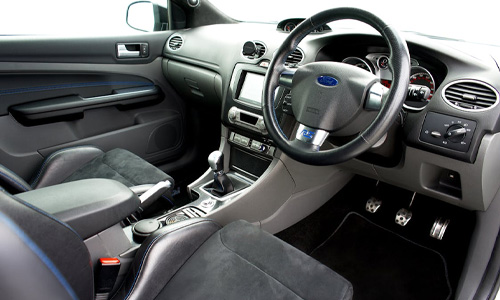
Dust accumulates quickly in these areas. Start by using a vacuum with a brush attachment to remove loose dirt. For the vents, a small brush or even a foam paintbrush works great to get into the crevices. Wipe down the dashboard with a damp microfiber cloth and finish with a dash protectant to keep it looking new.
2. Carpets and Floor Mats
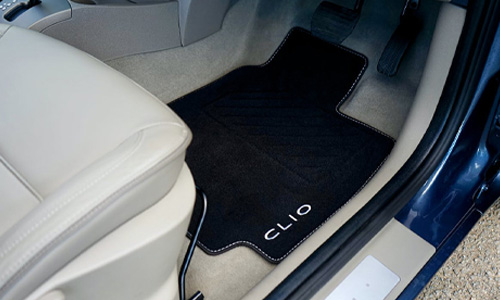
Remove the mats and give them a good shake or vacuum. For the carpets, use a carpet cleaner that’s suitable for automotive use. Scrub stubborn stains with a brush, and then vacuum again once the carpets are dry.
Pro Tip: Sprinkle baking soda on your carpets before vacuuming to help neutralize odors.
How to Clean Car Windows Like a Pro
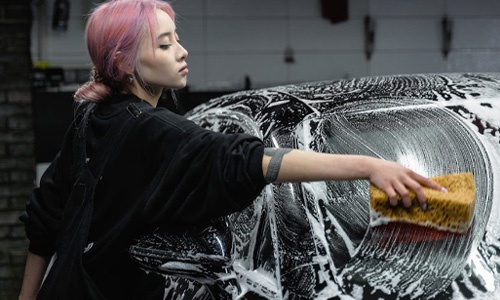
Cleaning car windows can be tricky, especially if streaks are your nemesis. Here’s how to achieve that crystal-clear finish:
- Step 1: Use an automotive glass cleaner. Spray it on a microfiber cloth rather than directly on the window to avoid overspray on your interior.
- Step 2: Wipe the windows in a vertical motion first, then follow up with horizontal wipes to prevent streaks.
- Step 3: Don’t forget to roll down the windows slightly to clean the top edges.
Pro Tip: Avoid cleaning windows in direct sunlight, as the cleaner can dry too quickly and leave streaks.
How to Clean Your Car Engine Safely

Cleaning your car engine might sound daunting, but it’s simpler than you think. Here’s a basic method that even a beginner can handle:
- Step 1: Make sure the engine is cool. Cover sensitive areas like the alternator and air intake with plastic bags.
- Step 2: Spray a degreaser on the engine, focusing on areas with built-up grime. Let it sit for a few minutes.
- Step 3: Use a brush to scrub away the grime, then rinse with a low-pressure hose. Dry with a clean towel, and remove the plastic coverings.
Pro Tip: Perform this task once or twice a year to keep your engine in top condition.
Quick and Easy Car Cleaning Hacks
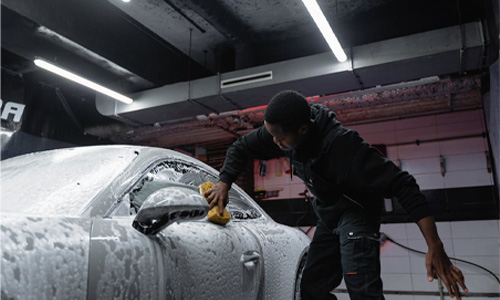
Life’s busy, and sometimes you just need quick solutions to keep your car looking fresh. Here are some hacks:
- Lint Roller for Pet Hair: A lint roller is perfect for picking up pet hair from seats and carpets.
- Cupcake Liners for Cup Holders: Place silicone cupcake liners in your cup holders to catch crumbs and spills. Just pop them out and wash them when needed.
- Toothpaste for Headlights: If you don’t have a headlight restoration kit, toothpaste can work in a pinch for minor oxidation.
- Related Reading: If you love hacks, check out our Quick Home Organization Tips for more time-saving ideas.
Must-Have Car Cleaning Products
To make your car cleaning routine even easier, here are some top products you should have:
- Microfiber Cloths: Perfect for cleaning without scratching surfaces.
- All-Purpose Cleaner: A versatile cleaner that works on multiple surfaces.
- Vacuum Cleaner: A handheld or portable vacuum is great for quick clean-ups.
- Leather Conditioner: Essential for maintaining leather seats and interiors.
FAQs on How to Clean My Car
1. How Often Should I Clean My Car?
It’s generally recommended to wash the exterior of your car at least every two weeks and clean the interior once a month. However, if you live in an area with harsh weather conditions, such as frequent rain or snow, you might need to clean your car more often to prevent damage from salt, dirt, and other debris.
2. Can I Use Household Cleaning Products on My Car?
While some household cleaning products can be used for car cleaning, it’s important to be cautious. Products like dish soap can strip the wax off your car’s paint, making it more vulnerable to scratches and damage. It’s better to use cleaners specifically designed for automotive use, as they are formulated to be gentle on your car’s surfaces while effectively removing dirt and grime.
3. How do I Remove Stubborn Stains from Car Upholstery?
Stubborn stains on car upholstery can be tackled with a mixture of water and vinegar or a dedicated fabric cleaner. For particularly tough stains, such as coffee or grease, you can apply a small amount of baking soda and water paste, let it sit for a few minutes, and then scrub gently with a brush. Always test a small, hidden area first to ensure the cleaner doesn’t damage the fabric.
4. Is it Necessary to Clean the Car Engine, and How Often Should I Do it?
Cleaning the car engine is not necessary for everyone, but it can be beneficial if you notice a buildup of dirt or oil. If you decide to clean your engine, once or twice a year is sufficient. This helps maintain the engine’s performance and can make it easier to spot leaks or other issues.
5. What’s the Best Way to Clean Car Windows Without Leaving Streaks?
To clean car windows without streaks, use a dedicated automotive glass cleaner and a microfiber cloth. Avoid cleaning in direct sunlight, as this can cause the cleaner to evaporate too quickly, leaving streaks. Wipe the windows in a vertical and then horizontal pattern to ensure thorough coverage.
6. How Can I Keep My Car Smelling Fresh?
To keep your car smelling fresh, regularly vacuum and clean the interior, paying special attention to areas where odors can linger, like the seats and carpets. You can also use air fresheners or natural odor absorbers, like activated charcoal or baking soda, to neutralize unpleasant smells.
7. Can I Clean My Car with Just Water?
While rinsing your car with water can remove loose dirt, it won’t be as effective as using soap or a dedicated car wash solution. Water alone won’t break down the oils and grime that accumulate on your car’s surface, so it’s best to use a proper cleaner for a thorough wash.
8. How do I Clean Hard-to-reach Areas in My Car?
For hard-to-reach areas like air vents and crevices, use a small brush, like a foam paintbrush or an old toothbrush. You can also use compressed air to blow out dust from tight spots. For small cracks and gaps, a vacuum with a narrow attachment can be very effective.
9. What’s the Best Way to Dry My Car after Washing it?
After washing your car, use a clean, soft microfiber towel to dry the surface. Start from the top and work your way down to avoid water spots. Microfiber towels are highly absorbent and won’t scratch the paint. For a streak-free finish, you can also use a chamois cloth.
10. Should I Wax My Car after Every Wash?
You don’t need to wax your car after every wash, but waxing every 2-3 months can help protect the paint and keep your car looking shiny. Wax creates a protective barrier against environmental elements like UV rays, bird droppings, and tree sap.
Keeping your car clean doesn’t have to be a chore. With the right tools and a little know-how, you can easily maintain a spotless look that you’ll be proud to show off. So, next time your car’s looking a little worse for wear, just follow these tips and enjoy that fresh car feeling all over again!
Ready to keep your life clean and organized? Don’t forget to subscribe to WomenTips for more hacks, tips, and tricks to simplify your daily routine!
Elena
Related posts
Women Tips
Privacy Overview
| Cookie | Duration | Description |
|---|---|---|
| cookielawinfo-checkbox-analytics | 11 months | This cookie is set by GDPR Cookie Consent plugin. The cookie is used to store the user consent for the cookies in the category "Analytics". |
| cookielawinfo-checkbox-functional | 11 months | The cookie is set by GDPR cookie consent to record the user consent for the cookies in the category "Functional". |
| cookielawinfo-checkbox-necessary | 11 months | This cookie is set by GDPR Cookie Consent plugin. The cookies is used to store the user consent for the cookies in the category "Necessary". |
| cookielawinfo-checkbox-others | 11 months | This cookie is set by GDPR Cookie Consent plugin. The cookie is used to store the user consent for the cookies in the category "Other. |
| cookielawinfo-checkbox-performance | 11 months | This cookie is set by GDPR Cookie Consent plugin. The cookie is used to store the user consent for the cookies in the category "Performance". |
| viewed_cookie_policy | 11 months | The cookie is set by the GDPR Cookie Consent plugin and is used to store whether or not user has consented to the use of cookies. It does not store any personal data. |

